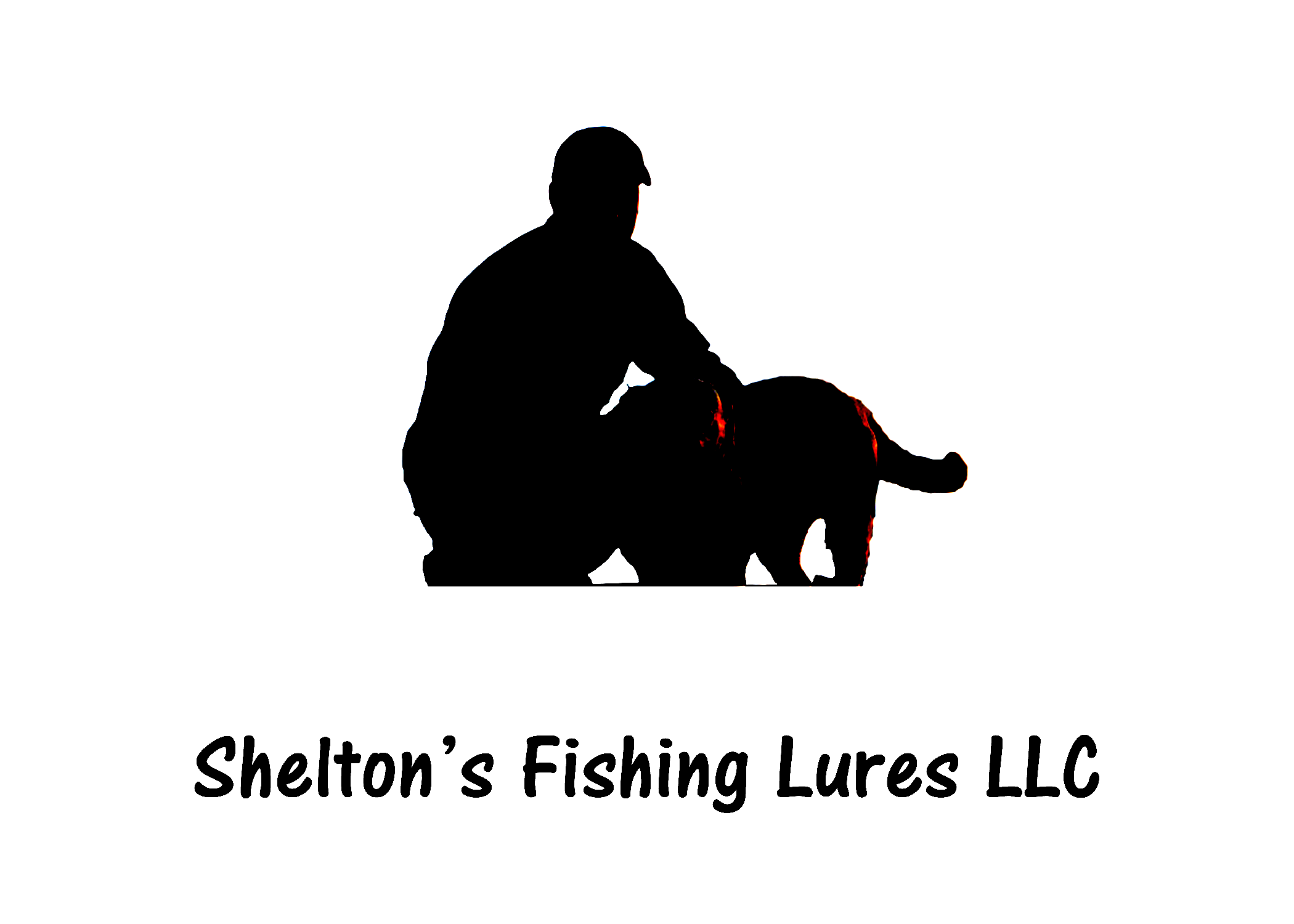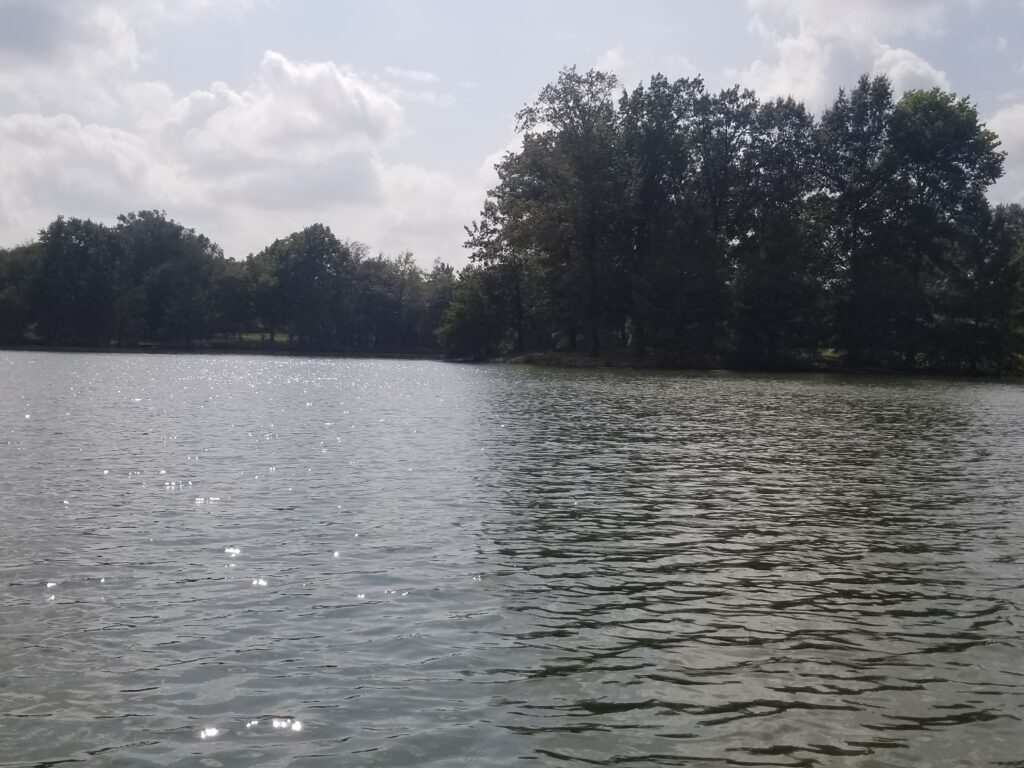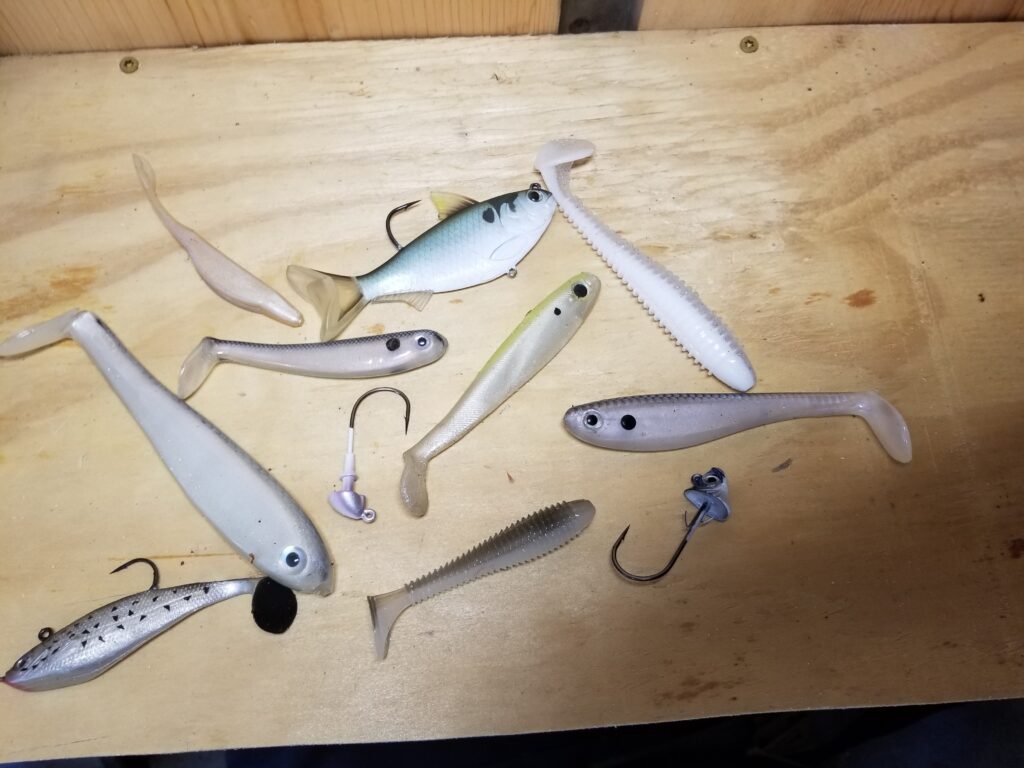Crappie
How To Catch Crappie For Beginners
Please note, this article contains several links to articles throughout my site which will help you with different areas of learning how to catch crappie. If highlighted in blue, you’ll be able to breakdown this article into parts that may peak your interest!
- What Are Crappie?
- What Do Crappie Feed On?
- What’s The Best Pole To Use For Crappie Fishing?
- What Fishing Line Works Best For Crappie Fishing?
- What Are The Most Popular Lures For Crappie?
- How Deep Of Water Should You Look For To Catch Crappie?
- How To Catch Crappie In Spring
- How To Catch Crappie In Summer
- How To Catch Crappie In Fall
- How To Catch Crappie In Winter
- Black Crappie Vs. White Crappie
- How To Cook Crappie
Catching Crappie Can Be Learned In A Day Then Mastered Over A Lifetime
The first time I ever realized you could catch fish using plastic baits made to manipulate them into thinking they were real was at our local city lake when I was still in grade school.
Two gentlemen in a corner cove fishing from the bank were pulling silver looking fish in cast after cast and I noticed they weren’t using the live worms that I was used to using.
My grandfather realizing I had become memorized by this told me that they were catching crappie and that I would need to use “jigs” in order to replicate what they were doing but his tacklebox only consisted of bobbers, line, pliers, hooks, and split shots.
One of the guys heard him and spoke up telling me to come over and grab one of the white looking things he was using along with a jig head. He then told me to cast out as far as possible then slowly reel in letting the bait fall to the bottom periodically.
It took several tries but eventually a fish became hooked along with a young boy!
What Are Crappie
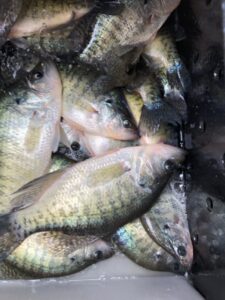
Crappie are a subspecies of what’s commonly referred to as “panfish”. They go by many names such as specs, speckled perch, papermouths and many more and can be found in just about every lake and river in the country.
Known for their abundance, taste, and relative ease to catch, crappie are the most popular species of freshwater fish chased in America. They follow predictable patterns yearly and have a relatively high survival rate of a female’s eggs that hatch and grow.
Crappie are further divided into three primary types: Black crappie, white crappie, and hybrid crappie. We will discuss each in detail later in this article as many differences exist between them.
What Do Crappie Feed On?
When it comes to their diet, crappie are carnivores preferring to feed on bugs, minnows, small fry, and threadfin shad. They are often found in large schools and feed around structure where they can ambush prey and hide from predators which makes finding and catching them easy!
I actually enjoy catching my own bait for crappie using traps scattered around the lake.
What’s The Best Pole To Use For Crappie Fishing?
The best pole I’d recommend for any new fisherman all the way up to a seasoned veteran would be a six foot All Star Classic with medium action underspin rod which I’ve used for 18 years now with no sign of slowing down. They’re well worth the money.
The 2nd pole would be a 10-foot jigging pole which is great for vertical fishing. There are many reputable brands out there to choose from.
Combining these two rods will set you up for success in virtually any situation.
What Fishing Line Works Best For Crappie Fishing?
The best line choice for crappie fishing regardless of conditions is fluorocarbon in the 4 to 6lbs. range. This will cover all water clarities and sky conditions.
I do fish with a gentleman who prefers 30lbs. braid line in muddy water as he’s able to avoid breakoffs when fishing deep brush piles. He’s well known for catching daily limits so don’t limit yourself to just one option.
What Are The Most Popular Lures For Crappie?
As a beginning fisherman, keep it simple. We will discuss first what lures to focus in on and how to rig them properly. Next which time of the year will yield the best results in your new hobby. You can determine whether you’d rather fish a minnow or a jig in the beginning after figuring out your style.
Using Live Bait For Crappie Is Your Best Bet As A Beginner
Fathead minnows are the most popular live bait sold and for good reason! They’re the ultimate beginning bait for new crappie fishing. Using the All-Star rod mentioned above and light line, it’s best to fish with a line, bobber, hook, and split shot.
Bobber’s can either be fixed or a slip cork. When using a slip cork for crappie be sure that you have all the items needed as each one plays a critical role in your success and the success of the rig.
Using Artificial Jigs For Crappie Is My Preferred Method
Crappie Jigs refer to any plastic design made to imitate a minnow. When it comes to options Designs/Colors of crappie jigs are endless, and the sizes tend to be between 1 to 3″. Though considered a more advanced technique, beginners are very capable of catching crappie using jigs only. It’s actually how I got my start and is cheaper over the long run.
Jig head options are equally as abundant. They range in weight from 1/64th ounce (sometimes even lighter) down to 1/4oz. Since the majority of heads are made of lead the design can vary from round head, all the way to a razor thin minnow head jig. Color patterns add the final customization to your jig profiles!
Trying to figure out which is better between minnows and jigs for crappie depends on several variables which I have covered in detail in the article highlighted! Also, you might be tempted to try using scents to liven up your crappie jigs!
Once you become a real pro, you’ll actually be able to use two jigs instead of one and enjoy the advantages that come with crappie fishing that way!
Most Popular Techniques For Catching Crappie
Crappie can be caught with a variety of retrieves and techniques. Depending on whether you’re a bank fisherman, or out in a boat, there’s a retrieve that will work for you.
Casting and Retrieving
Just as I learned in the beginning, casting and retrieving is the most popular style for bank fishermen when it comes to catching crappie. Start by casting out as far as you can and letting your bait sink to the bottom. You’ll know when to begin when your line slacks up. Lift your rod tip up and begin reeling slowly, but fast enough to keep the jig off the bottom. When you feel a thump, set the hook! Curly tails work best for this method.
Vertical Jigging
The most popular overall way to fish for crappie is vertical jigging. I’ve covered this method in detail. Click on the highlighted area!
Slip Corking
A popular way to fish amongst both bank and boat crappie fishermen is to use a slip cork. This technique is great for catching fish suspended in clear water above brush piles.
Spider Rigging
Ever looked out and seen a boat slowly trolling with several poles hanging off of the front in rod holders? You’re witnessing a popular technique called spider rigging. This is a great way to fish when crappie are either scattered or inactive because you can cover a lot of water finding those willing to feed.
Long Lining
A modification to spider rigging, Long lining for crappie involves setting several lines out off the middle of the boat and in the back using longer poles. outboards are used instead of trolling motors. This technique is best suited for crankbaits and larger jigs over drop offs.
Anglers targeting larger crappie us the long lining technique.
How Deep Of Water Should You Look To Catch Crappie?
First off, depth needs to be understood as a relative term. In my home lake, you’d be troubled to find water deeper than 25 feet. To us, 15 is considered “deep water”, while if you visited a lake like Georgia’s Lake Lanier, then 15 foot would be your first drop off of many and crappie will be caught in over 40 feet! Determining how fast your jigs will fall in the water depending on weight becomes important when fishing deep water.
One key to remember is regardless of the season, there will be crappie holding at just about any depth. A good rule of thumb though, is your most active crappie tend to be holding shallower because they’re likely feeding there instead of “suspending” out in deep water.
Another rule of thumb, the muddier the water the more crappie you’ll find shallow. If the water is clear, then you need to start your search in deeper water!
Crappie Fishing The Four Seasons
As discussed in several articles, crappie follow predictable routes around a lake during the course of a year. Learning these routes are paramount to catching the most crappie and becoming the best fisherman you can become.
Like most animals, crappie need nourishment, shelter, and reproduction. With reproduction usually only coming once a year, we will look at this season first.
How To Catch Crappie In Spring
Spring is the time of year when crappie fishermen swarm the lakes looking to pack their freezers full of tasty crappie fillets. With their minds focused on breeding and feeding, crappie leave themselves vulnerable. The largest females are caught this time of year since they’ve developed eggs to go along with their winter fat storages. Yep, It’s time to learn how to fish the crappie spawn!
Know that during the spawn, crappie can be caught just as easily with both jigs and minnows in depths of around two to four feet around cover and grass. Your best to catch crappie this time of year is to use a slip cork.
How To Catch Crappie In The Summer
Summer is the rough and tough time of the year when I take a step back to fish bass tournaments. By now my deep freezers are full and I’ll be enjoying family fish fry’s all the way through fall.
This doesn’t mean you can’t catch crappie, you just have to be a little more patient. If you’re fortunate enough to have a lake with docks, fishing can actually be quite easy, as long as you know which docks attract the most crappie.
If you aren’t so fortunate it’s best to either stick to the first couple of hours or last couple of hours of daylight when the crappie are most active.
Vertical Jigging for crappie is the most popular way to fish in the summer.
How To Catch Crappie In The Fall
When temperatures start to drop a bit, the crappies biology tell them it’s time to start feeding again because winter is coming. It’s now when the bite will last a couple more hours on each side of sunrise and sunset then they did in summer.
Fishing shallow stake beds along with laydowns in 4 to 6 feet of water is my preferred way. 1/8oz jigs matched with curly tails is always a great choice now.
How To Catch Crappie In The Winter
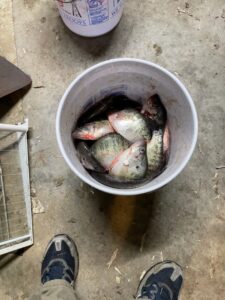
If you can brave the elements, winter is hands down my favorite time of the year to fish for crappie. At the crack of dawn and the lowest lights of the evening, crappie will chase dying shad all the way up against the bank leaving themselves vulnerable to any presentation you give them. Jigs actually work better than minnows in most lakes this time of the year and is a great time to start teaching yourself how to depend on plastics.
Once the sun gets up usually the first drop off from where you caught the crappie early will hold the fish. They will suspend and periodically chase shad back to the bank keeping themselves in an active mood all day.
Black Crappie Vs White Crappie
New fishermen would be surprised to know that black crappie and white crappie have many differences and will only flourish in certain lakes.
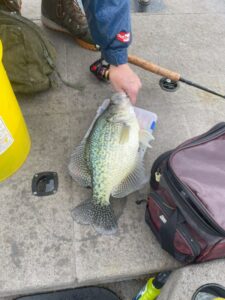
Black crappie have a more rounder shape making them the better fighters of the two crappie. They inhabit clearer grassy lakes with more drop offs and contour. Given the fact they like these conditions vertical jigging takes a back burner to slip corking or casting and retrieving.
White crappie on the other hand have a more narrow torpedo style body making them excellent darters in the water. They’re more equipped for and flourish in shallower muddy water near wooden structures and bite aggressively but are modest fighters at best. I’ve found much better success with minnows for black crappie and jigs for white crappie over the years.
The hybrid crappie is less common and is a mixture of the two breeding.
How To Cook Crappie
We’ve come to the part where you’re rewarded for learning how to catch these amazing fish. Crappie taste incredible! They have a unique texture along with a very clean flavor that adapts to many styles of cooking.
Fried crappie are always going to be peoples go to but as for me and my family, we eat them: on Italian Sandwiches, Mediterranean Style in a light flour coating, in crappie chowders, or my personal favorite…Crappie Tacos!
However you go about it, make sure to have plenty as friends and family will come from all over at the very sound of a crappie fish fry!
Conclusion On How To Catch Crappie For Beginners
This article and the links that can be found in it are a blueprint of thirty years of trial and error that has developed into my own personal playbook for catching crappie. No matter how often or how many trips I’ve been, feeling that “thump” is what I and millions of fishermen live for.
Regardless of whether you’re at the beginning of your crappie career, or an old seasoned vet looking for tips and tricks to add to your own arsenal please enjoy what I’ve laid out.
I think you’ll be just as grateful for the amazing crappie that was put here on this earth!
Crappie Fishing Frequently Asked Questions
For beginners minnows are the most popular bait but they seem to have the biggest advantage to jigs in the summer time when crappie only want larger meals.
The 1/16oz jig head is the most popular selling sized jig head throughout America.
Monkey Milk and Electric Chicken are the two most popular selling jig color combinations and are reliable in most lakes.
Tube Jigs and Curly Tail Jigs have caught more crappie than all other jigs combined!
Crappie depend on structure such as docks, rocks, logs, brush piles, bridge piers, buck brush, and homemade crappie structures to help conceal them against predators as well as provide a hiding spot to ambush prey.
While not the optimal time to fish for them, nightfall can be productive for crappie. Using lights to attract bait will lead to successful outings especially in the summer time!
Crappie can be both scaled as well as filleted. Scaling is typically passed down from the old timers who swear that the skin gives the fish the extra flavor, while filleting will leave the fish tasting less “fishy”
